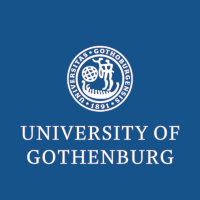Reinforcing Spirals and Online Conflict
- Event: Seminar
- Lecturer: Gregor Rettenegger from University of Gothenburg
- Date: 09 March 2022
- Duration: 2 hours
- Venue: Gothenburg and Online
Abstract: Slater’s (2007, 2015) Reinforcing Spirals Model has gotten a lot of attention in communication research in recent years. The basic idea is that people that share beliefs flock into groups that have similar media use patterns and form homogeneous groups on social media. This behavior is likely to strengthen their group-defining beliefs, and social identities over time, creating a (sometimes) vicious cycle where beliefs lead to media use patterns, that in return reinforce those beliefs (and so on) over time. In the online sphere, people often rely on group or social identities to communicate to others who they are and what matters to them. One particularly promising way to express belonging to and increase one’s status in a social group is by attacking a supposedly evil outgroup (Tajfel et al., 1979; Klein et al., 2007). My Ph.D. project is located at the intersection of these concepts and aims at better understanding how media content, online homogeneity, and intergroup conflict drive polarization between social groups. Ultimately, I also aim to provide some insights into how online encounters between hostile groups might be designed or streamlined in a way that mitigates their polarizing effect.
Literature: Klein, O., Spears, R., & Reicher, S. (2007). Social identity performance: Extending the strategic side of SIDE. Personality and Social Psychology Review, 11(1), 28-45.
Slater, M. D. (2007). Reinforcing spirals: The mutual influence of media selectivity and media effects and their impact on individual behavior and social identity. Communication theory, 17(3), 281-303.
Slater, M. D. (2015). Reinforcing spirals model: Conceptualizing the relationship between media content exposure and the development and maintenance of attitudes. Media Psychology, 18(3), 370-395.
Tajfel, H., Turner, J. C., Austin, W. G., & Worchel, S. (1979). An integrative theory of intergroup conflict. Organizational identity: A reader, 56(65), 9780203505984-16.
